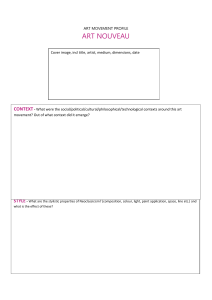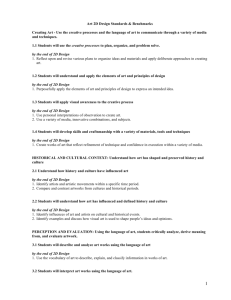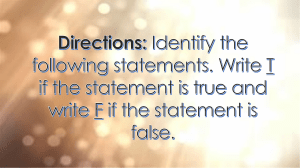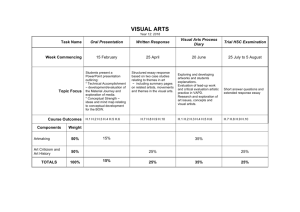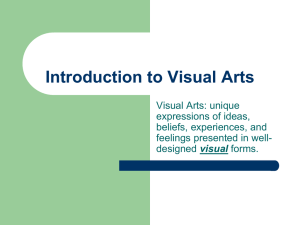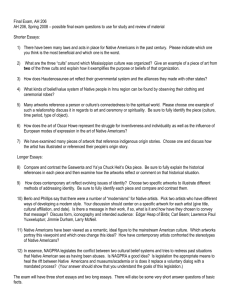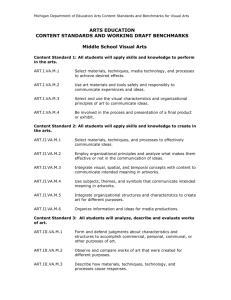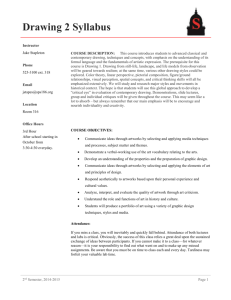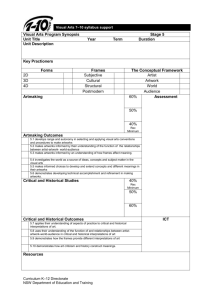Using the IB Visual Arts Journal
advertisement
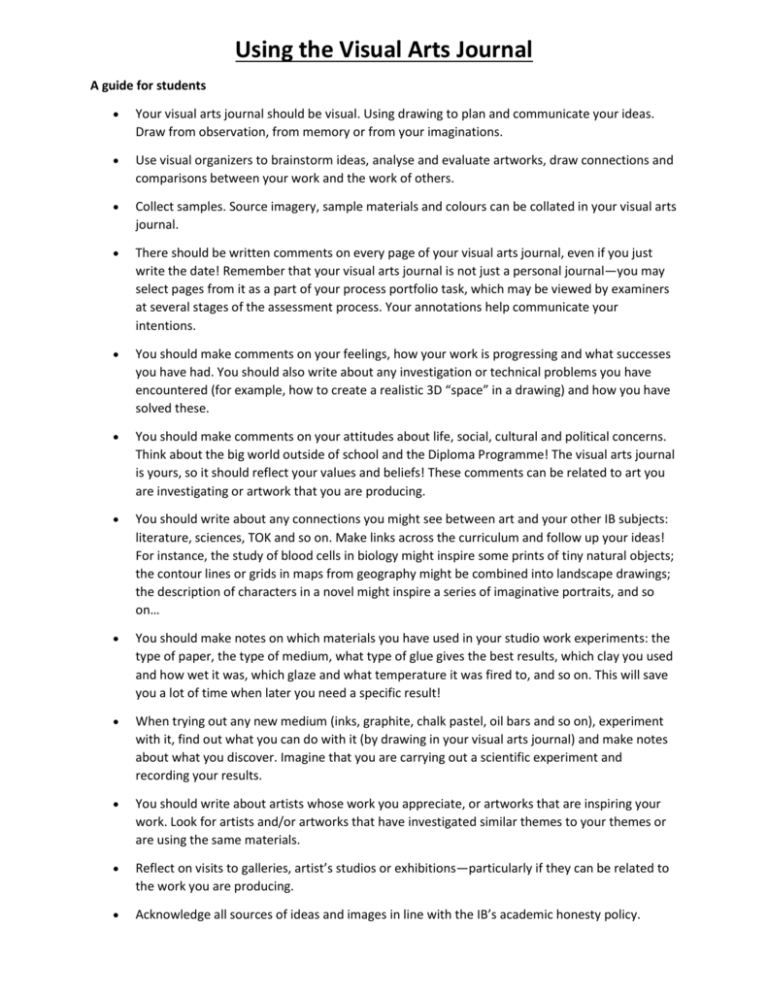
Using the Visual Arts Journal A guide for students Your visual arts journal should be visual. Using drawing to plan and communicate your ideas. Draw from observation, from memory or from your imaginations. Use visual organizers to brainstorm ideas, analyse and evaluate artworks, draw connections and comparisons between your work and the work of others. Collect samples. Source imagery, sample materials and colours can be collated in your visual arts journal. There should be written comments on every page of your visual arts journal, even if you just write the date! Remember that your visual arts journal is not just a personal journal—you may select pages from it as a part of your process portfolio task, which may be viewed by examiners at several stages of the assessment process. Your annotations help communicate your intentions. You should make comments on your feelings, how your work is progressing and what successes you have had. You should also write about any investigation or technical problems you have encountered (for example, how to create a realistic 3D “space” in a drawing) and how you have solved these. You should make comments on your attitudes about life, social, cultural and political concerns. Think about the big world outside of school and the Diploma Programme! The visual arts journal is yours, so it should reflect your values and beliefs! These comments can be related to art you are investigating or artwork that you are producing. You should write about any connections you might see between art and your other IB subjects: literature, sciences, TOK and so on. Make links across the curriculum and follow up your ideas! For instance, the study of blood cells in biology might inspire some prints of tiny natural objects; the contour lines or grids in maps from geography might be combined into landscape drawings; the description of characters in a novel might inspire a series of imaginative portraits, and so on… You should make notes on which materials you have used in your studio work experiments: the type of paper, the type of medium, what type of glue gives the best results, which clay you used and how wet it was, which glaze and what temperature it was fired to, and so on. This will save you a lot of time when later you need a specific result! When trying out any new medium (inks, graphite, chalk pastel, oil bars and so on), experiment with it, find out what you can do with it (by drawing in your visual arts journal) and make notes about what you discover. Imagine that you are carrying out a scientific experiment and recording your results. You should write about artists whose work you appreciate, or artworks that are inspiring your work. Look for artists and/or artworks that have investigated similar themes to your themes or are using the same materials. Reflect on visits to galleries, artist’s studios or exhibitions—particularly if they can be related to the work you are producing. Acknowledge all sources of ideas and images in line with the IB’s academic honesty policy.
